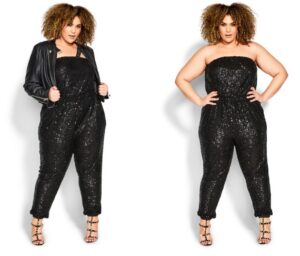When shadowing a doctor, wear professional attire such as business casual or scrubs, depending on the medical setting. Dress comfortably, but avoid wearing flashy jewelry and perfume to maintain a serious and sterile environment.
Shadowing a doctor is an excellent way to get a glimpse into the medical field and learn about the day-to-day responsibilities of a physician. It is a unique opportunity to shadow practitioners in various medical specialties, including surgery, emergency medicine, or family medicine.
Aspiring doctors can observe patient interactions, vital sign assessments, and the overall decision-making process. However, it is essential to dress appropriately and be mindful of the professional environment to make a good impression and respect the patient’s privacy. In this article, we will discuss what to wear when shadowing a doctor and offer some tips on making the most out of this experience.

Credit: shadow.doctorsinitaly.com
Clothing Options For Shadowing A Doctor
Are you excited to shadow a doctor? As you prepare for this unforgettable experience, don’t forget to plan what to wear. Clothing options for shadowing a doctor may vary depending on the medical facility and setting. In this section, we’ll discuss the key points that could help you determine what to wear. Before you decide what to wear, it’s crucial to understand the dress code in healthcare settings. Dress codes vary from facility to facility, but the following dress code guidelines are typical in most places:
- Scrubs: They are the standard uniforms for medical professionals, and they come in different colors. Always ask your contact person at the facility you will be shadowing if they provide scrubs or if you need to bring your own.
- Closed-toe shoes: Shoes should be comfortable, supportive, and closed-toe for your safety and protection against the fluid and sharps that exist in a healthcare setting.
- Lab coats: A lab coat is sometimes worn over scrubs, and it provides an additional layer of protection from exposure to body fluids and other potentially harmful substances.
- Jewelry: Avoid wearing jewelry that could injure you or others, such as dangling earrings or bracelets.
- Hair: Keep your hair neat and pulled back if it’s long. It’s best to wear a hair tie or a cap to keep your hair in place.
Comfortable, Chic, And Professional Clothing: The Baseline For Shadowing Doctors
While the dress code guidelines above are essential, it’s also important to dress in comfortable, chic, and professional clothing that aligns with the healthcare setting. Here are some key points to keep in mind:
- Comfortable shoes: Wear comfortable shoes that you can walk in for an extended period. Walking around the hospital for long hours can be tiring and stressful.
- Professional attire: Dress professionally and appropriately, as you are representing yourself, the medical facility, and the healthcare profession.
- Layering: Wear clothes that are appropriate for the healthcare environment but that can also accommodate temperature changes throughout the day. Wear an undershirt or layering piece that you can remove when it gets too warm or add when the temperature drops.
- Colors: Wear subdued colors such as white, black, brown, or navy blue. Avoid wearing bright and flashy colors or loud patterns that can be a distraction to patients or staff.
- Backpacks: Carry a backpack or a bag that’s appropriate for the healthcare setting. Avoid carrying large bags or backpacks that can cause accidents or discomfort.
Now that you have a better understanding of what to wear when shadowing a doctor, make sure to plan your wardrobe accordingly. Remember that comfort, professionalism, and appropriateness are essential, and always check with the facility beforehand to ensure you follow their guidelines.
Footwear Suggestions For Shadowing A Doctor
Shadowing a doctor can be a great way to gain insight into the medical profession, but deciding what to wear can be a bit of a challenge. You want to be comfortable, safe, and professional all at the same time.
Footwear, in particular, can make a huge difference in your experience. Here are some suggestions to make your footwear and shadowing experience the best it can be.
Comfortable And Supportive Shoes: Navigating Long Shifts
- Choose shoes that offer ample support and cushioning since you’ll be on your feet for long hours during shadowing.
- Closed-toe shoes with soft, pliable leather or mesh uppers that offer breathability are ideal.
- Look for shoelaces or buckles that can be adjusted during the day.
- Avoid shoes with stiff soles or that don’t provide enough support for your arches or heels.
Sneakers, Flats, And Closed-Toe Shoes: Safety Tips
- Comfort and support are important, but so is safety. If you’re shadowing in a hospital or other medical setting, you’ll need to be aware of potential hazards.
- Choose shoes with slip-resistant soles to avoid slips and falls.
- Closed-toe shoes are essential to protect your feet from potential spills or debris on the floor.
- Avoid wearing high heels, sandals, or flip-flops since they don’t offer enough protection.
Comfort and safety should be your top priorities when selecting footwear for shadowing a doctor. Look for options that offer good support for long hours, breathability, and slip-resistant soles. By following these tips, you can maximize the enjoyment of shadowing while keeping your feet healthy and happy.
Accessory Tips For Shadowing A Doctor
Going on a shadowing experience with a doctor can be exciting, especially when you’re a student getting a glimpse of the medical field. Proper attire and accessories are crucial for this occasion, as it not only shows professionalism but also help you keep up with the pace.
Minimal And Functional Accessories: Keeping It Simple
It’s crucial to keep accessories at a minimum and ensure the ones you wear serve a functional purpose. When shadowing a doctor, you’ll need ease of movement to keep up with their fast-paced environment. Here are some minimal and functional accessories to consider:
- A simple, yet sophisticated watch. It’s better to wear a watch rather than constantly check your phone
- Comfortable shoes with a sturdy sole and proper support. Avoid wearing sandals and open-toe shoes
- A small cross-body bag for your notes, phone, and wallet. It’s not only functional but also safer than a shoulder bag that can easily slip off.
Watches, Lanyards, And Other Accessories: What To Wear And What To Leave
Watches and lanyards can be helpful when shadowing a doctor, but there are specific ones to wear and others to leave at home. Here are some tips you need to consider:
- Avoid wearing a fancy or distracting watch. Both digital and analog watches are fine as long as they don’t have flashing lights or alarms
- Many hospitals and clinics require visitors to wear a lanyard, which includes your name, photo, and hospital identification. These lanyards can be functional, but avoid wearing a lanyard with excessive decorations such as ribbons, buttons, or glitter.
- Leave bulky and distracting jewelry, including bracelets, necklaces, and dangling earrings, at home. Small stud earrings are fine, but avoid any jewelry that can make noise or clanking sounds.
Remember that the key to accessorizing when shadowing a doctor is to keep it simple, functional, and professional. By following these tips, you’ll be able to focus more on the experience and less on your attire.
Makeup, Hair, And Grooming For Shadowing A Doctor
Shadowing a doctor is an exciting opportunity that can set the stage for your future career in medicine. It requires dressing professionally, but what does that mean? Your grooming, makeup, and hairstyle are just as important as your outfit. Here are some tips on how to put together the perfect look for shadowing a doctor.
Natural And Subtle Makeup: Enhancing Your Features For A Professional Setting
When it comes to makeup, less is more. You want to enhance your natural features, not cover them up. Here are some things to keep in mind:
- Avoid bold lipstick or heavy eye makeup. Go for natural, neutral colors instead.
- Apply light coverage foundation or bb cream to even out your skin tone.
- Keep your eyebrows neatly groomed and fill them in if necessary.
- Apply a little bit of blush to give your cheeks a healthy glow.
- Keep your makeup natural and subtle.
Tying Your Hair Back: Practical And Tidy Hairdos
It’s important to keep your hair out of your face, especially when you’re shadowing a doctor. Not only is it practical, but it also looks professional. Here are some tips on how to style your hair:
- Tie your hair back in a ponytail, bun, or braid.
- Use hair ties, bobby pins, and hairspray to keep your hair in place.
- Avoid hairstyles that are too wild, messy, or distracting.
- Keep your hair looking neat and tidy.
Fragrances, Piercings, And Tattoos: Rules For Minimizing Distractions
When it comes to fragrances, piercings, and tattoos, it’s essential to minimize distractions. Here are some tips on how to do that:
- Avoid wearing strong perfumes or colognes. Stick to light, fresh scents.
- Remove any visible piercings, if possible, or keep them small and discreet.
- Cover up any visible tattoos, if possible.
- Keep accessories to a minimum.
Remember, when shadowing a doctor, you want to look professional, but you also want to be comfortable. Keep these tips in mind and put together a look that makes you feel confident and ready to learn.
Seasonal Considerations For Shadowing A Doctor
Shadowing a doctor is an excellent way to gain valuable experience in the medical field. However, it’s crucial to dress appropriately, depending on the season. Whether you’re shadowing in winter or summer, you need to wear comfortable clothes that are both practical and professional-looking. In this section, we’ll go over some tips on what to wear when shadowing a doctor, depending on the season.
Stay Warm While Looking Professional In Winter: Jackets, Gloves, And Scarfs
If you’re shadowing a doctor during the winter months, you need to keep yourself warm, while still maintaining a professional appearance. Here are some tips:
- Wear a warm, comfortable coat that is professional-looking. Avoid bulky coats that may make you look unprofessional.
- Consider wearing gloves to keep your hands warm, especially if you’re working in a hospital environment.
- A scarf is an excellent accessory for keeping your neck warm, but make sure it’s not too bulky, so it doesn’t interfere with your work.
Summer-Friendly Outfits: Lightweight Fabrics And Breathable Clothing For Hot Weather
Summer weather can be quite uncomfortable, particularly if you’re working in a hospital. You need to dress appropriately for the weather, while still maintaining a professional appearance.
- Wear clothes that are lightweight and breathable. Avoid wearing clothes that are too tight or restrictive, as they may be uncomfortable in hot weather.
- Consider wearing light-colored clothing. Dark colors absorb more heat from the sun, making you feel warmer.
- Choose clothes that are appropriate for the hospital environment.
Other Seasonal Considerations: What To Wear In Fall And Spring
Fall and spring can be tricky seasons to dress for, as temperatures can fluctuate greatly from day to day. Here are some tips on what to wear:
- Layer your clothes. This way, you can add or remove layers as the temperature changes throughout the day.
- Wear a comfortable pair of shoes. Walking around the hospital can be exhausting, so make sure you’re wearing shoes that are both comfortable and professional-looking.
- Dress appropriately for the hospital environment. Avoid wearing clothes that are too revealing or casual, as they may not be appropriate for the hospital setting.
Overall, when shadowing a doctor, it’s essential to dress appropriately for the season. By following these tips, you can stay comfortable and professional-looking throughout your experience.
FAQ On What To Wear When Shadowing A Doctor
What Is The Dress Code For Shadowing A Doctor?
The dress code for shadowing a doctor can vary depending on the type of medical institution and medical specialty. However, it is recommended to dress in business casual attire, such as slacks, a dress shirt/blouse, and closed-toed shoes.
Can I Wear Scrubs To Shadow A Doctor?
Although scrubs are typically worn by medical professionals, it is not recommended to wear them when shadowing a doctor. Instead, opt for business casual attire to present a professional image. However, some medical institutions may provide scrubs for shadowing purposes.
What Should I Avoid Wearing When Shadowing A Doctor?
Avoid wearing anything revealing or distracting, such as short skirts, shorts, flip flops, and excessive jewelry or makeup. It is also important to refrain from wearing anything with inappropriate or offensive language or graphics.
Should I Wear A Lab Coat When Shadowing A Doctor?
Wearing a lab coat when shadowing a doctor is not necessary, as it is typically reserved for medical professionals. However, if provided with a lab coat, it is acceptable to wear it to create a professional appearance.
Can I Wear Sneakers When Shadowing A Doctor?
Closed-toed shoes are recommended when shadowing a doctor, but sneakers are acceptable as long as they are clean and in good condition. It is important to avoid wearing sandals or other open-toed shoes to maintain a professional appearance.
Conclusion
In the healthcare industry, every interaction is an opportunity to make a great first impression. When shadowing a doctor, your choice of attire is a critical factor. It can reflect your level of commitment to the profession and communicate professionalism to patients.
The ideal outfit should promote comfort, functionality, and a positive representation of yourself and the healthcare facility. Consider the specialty area, protocol, and cultural standards of the medical center when picking your outfit. Always ensure to keep it simple, clean, and comfortable, yet professional.
Accessorize with a smile, exhibit confidence, and demonstrate respect toward others, and you are sure to leave a great impression. While your dressing may not be the only factor to consider when shadowing a doctor, it is a significant one. Take it seriously, follow the guidelines, and remain mindful of your behavior, and you will be well on your way to a successful and rewarding career in the healthcare industry.





